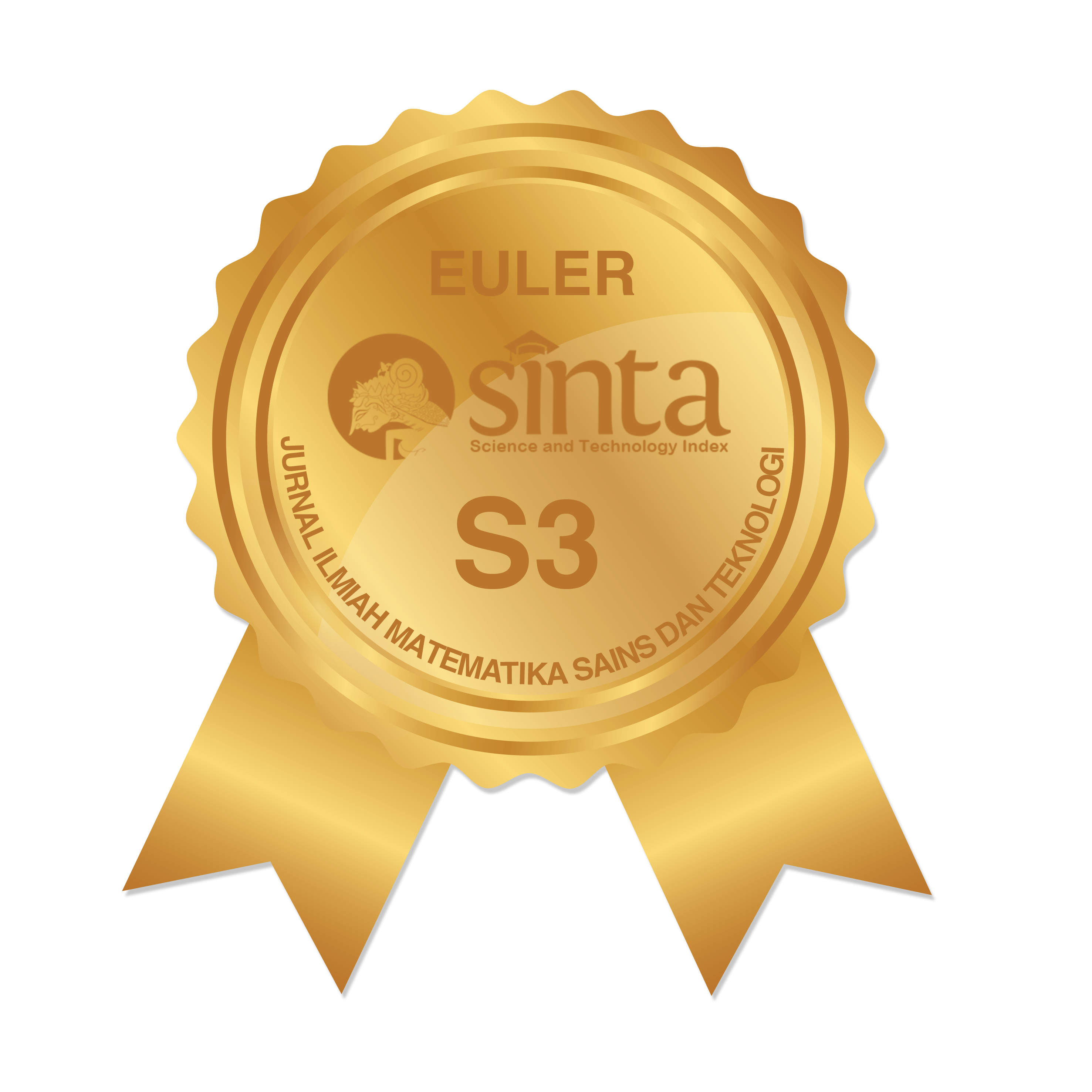Pemodelan Indeks Pembangunan Manusia Nusa Tenggara Barat Menggunakan Geographically Weighted Regression
Abstract
Keywords
Full Text:
PDFReferences
Badan Pusat Statistik, Statistik Indonesia 2023. Badan Pusat Statistik, 2023.
Badan Pusat Statistik, Indeks Pembangunan Manusia 2022. Badan Pusat Statistik, 2023.
Badan Pusat Statistik Nusa Tenggara Barat, Provinsi Nusa Tenggara Barat Dalam Angka 2023. Badan Pusat Statistik Nusa Tenggara Barat, 2023.
Nurhalizah and P. Sitompul, "Analysis of Ordinary Least Square and Geographically Weighted Regression on the Human Development Index of North Sumatra 2021" Formosa Journal of Applied Sciences, vol. 1, no. 6, pp. 981-1000, Nov. 2022, doi: 10.55927/fjas.v1i6.1718.
M. Marizal and H. Atiqah, "Pemodelan Indeks Pembangunan Manusia di Indonesia dengan Geographically Weighted Regression (GWR)" Jurnal Sains Matematika dan Statistika, vol. 8, no. 2, p. 133, Sep. 2022, doi: 10.24014/jsms.v8i2.17886.
A. F. Adatunaung, D. Hatidja, and W. C. D. Weku, "Performa Kernel pada Model Geographically Weighted Regression untuk Menentukan Faktor-faktor Yang Mempengaruhi Indeks Pembangunan Manusia di Provinsi Sulawesi Selatan" Jurnal Ilmiah Sains, vol. 23, no. 2, pp. 140-148, Oct. 2023, doi: 10.35799/jis.v23i2.48867.
M. Nadya, W. Rahayu, and V. M. Santi, "Analisis Geographically Weighted Regression (GWR) Pada Kasus Pneumonia Balita di Provinsi Jawa Barat" Jurnal Statistika dan Aplikasinya, vol. 1, no. 1, pp. 23-32, 2017, doi: https://doi.org/10.21009/JSA.01103.
F. E. Putri, Mukhsar, Baharuddin, B. Abapihi, Ruslan, and Agusrawati, "Pemodelan Indeks Pembangunan Manusia di Indonesia Dengan Pendekatan Geographically Weighted Regression" in Prosiding Seminar Nasional Sains dan Terapan, 2022, pp. 34-49. Accessed: Dec. 10, 2023. [Online]. Available: https://ejournal.unsrat.ac.id/v3/index.php/sinta6/article/view/41869.
Z. F. Annabilah and H. T. Sutanto, "Pemodelan Indeks Pembangunan Manusia di Jawa Timur Menggunakan Geographically Weighted Regression (GWR)" Jurnal Ilmiah Matematika, vol. 7, no. 1, pp. 14-17, 2019, Accessed: Dec. 10, 2023. [Online]. Available: https://ejournal.unesa.ac.id/index.php/mathunesa/article/view/27011.
A. Langiran, Kismiantini, and E. P. Setiawan, "Penerapan Model Regresi Spasial Dalam Menentukan Faktor-faktor yang Mempengaruhi Indeks pembangunan Manusia di Kabupaten/Kota Pulau Kalimantan" Jurnal Statistika dan Sains Data, vol. 1, no. 1, pp. 1-9, 2023, Accessed: Dec. 10, 2023. [Online]. Available: https://journal.student.uny.ac.id/index.php/jssd/article/view/19069/18240.
N. M. S. Ananda, S. Suyitno, and M. Siringoringo, "Geographically Weighted Panel Regression Modelling of Human Development Index Data in East Kalimantan Province in 2017-2020" Jurnal Matematika, Statistika dan Komputasi, vol. 19, no. 2, pp. 323-341, Jan. 2023, doi: 10.20956/j.v19i2.23775.
M. H. Kutner, Chris. Nachtsheim, and John. Neter, Applied linear regression models. McGraw-Hill/Irwin, 2004.
Sugiyono, Metode Penelitian Kuantitatif Kualitatif Dan R&D. Bandung : Alfabeta, 2021.
S. Andriani, "Uji Park Dan Uji Breusch Pagan Godfrey Dalam Pendeteksian Heteroskedastisitas Pada Analisis Regresi" Jurnal Pendidikan Matematika, vol. 8, no. 1, pp. 63-72, 2017, Accessed: Nov. 14, 2023. [Online]. Available: http://dx.doi.org/10.24042/ajpm.v8i1.1014.
J. LeSage and R. Kelley Pace, Introduction to Spatial Econometrics. 2009.
A. Stewart. Fotheringham, C. Brunsdon, and M. Charlton, Geographically Weighted Regression. England: John Wiley & Sons Ltd, 2002.
R. E. Caraka and H. Yasin, Geographically Weighted Regression (GWR) : Sebuah Pendekatan Regresi Geografis, Edisi Pertama. Yogyakarta: Mobius, 2017. Accessed: Nov. 14, 2023. [Online]. Available: https://opac.perpusnas.go.id/DetailOpac.aspx?id=1153531.
DOI: https://doi.org/10.37905/euler.v11i2.23042
Refbacks
- There are currently no refbacks.
Copyright (c) 2023 Faiqotul Mala, Muhamad Fariq Hidayat

This work is licensed under a Creative Commons Attribution-NonCommercial 4.0 International License.
Euler : Jurnal Ilmiah Matematika, Sains dan Teknologi has been indexed by:
EDITORIAL OFFICE OF EULER : JURNAL ILMIAH MATEMATIKA, SAINS, DAN TEKNOLOGI |
 | Department of Mathematics, Faculty of Mathematics and Natural Science, Universitas Negeri Gorontalo Jl. Prof. Dr. Ing. B. J. Habibie, Tilongkabila, Kabupaten Bone Bolango 96554, Gorontalo, Indonesia |
 | Email: [email protected] |
 | +6287777-586462 (WhatsApp Only) |
 | Euler : Jurnal Ilmiah Matematika, Sains dan Teknologi (p-ISSN: 2087-9393 | e-ISSN:2776-3706) by Department of Mathematics Universitas Negeri Gorontalo is licensed under a Creative Commons Attribution-NonCommercial 4.0 International License. Powered by Public Knowledge Project OJS. |















